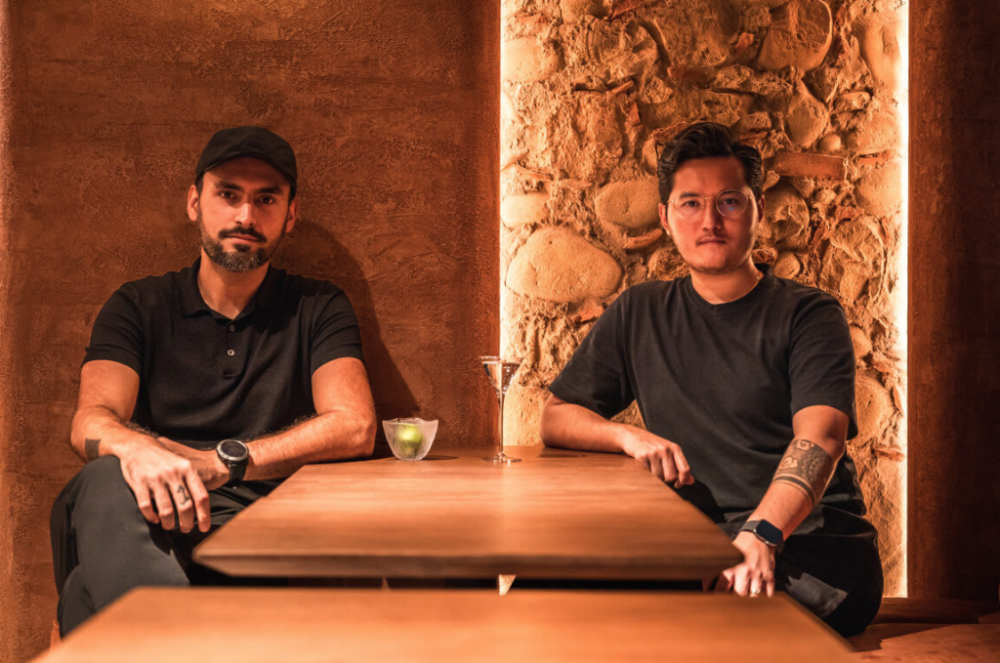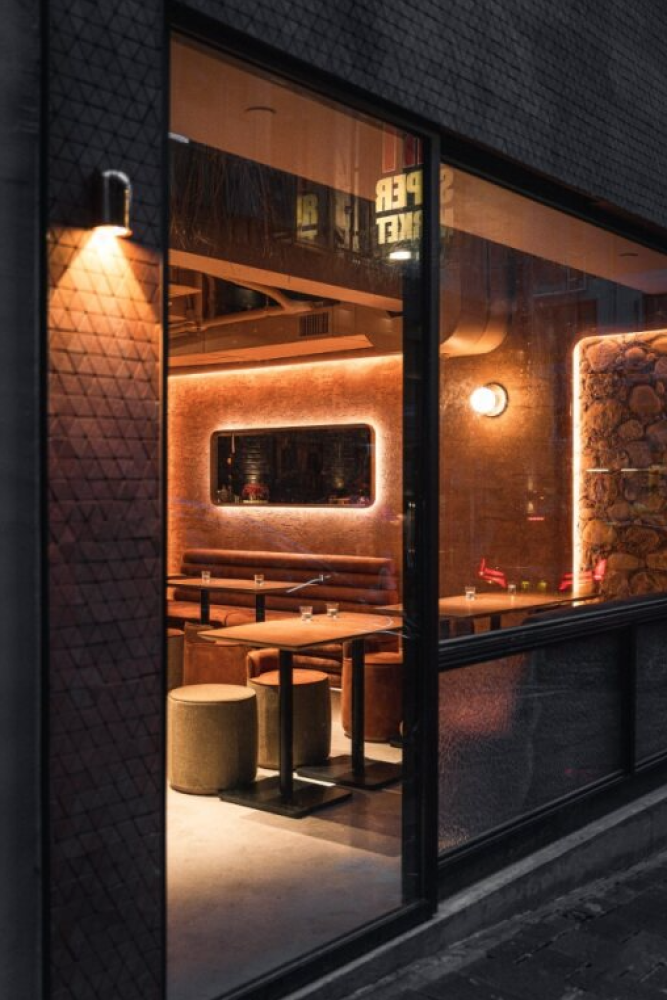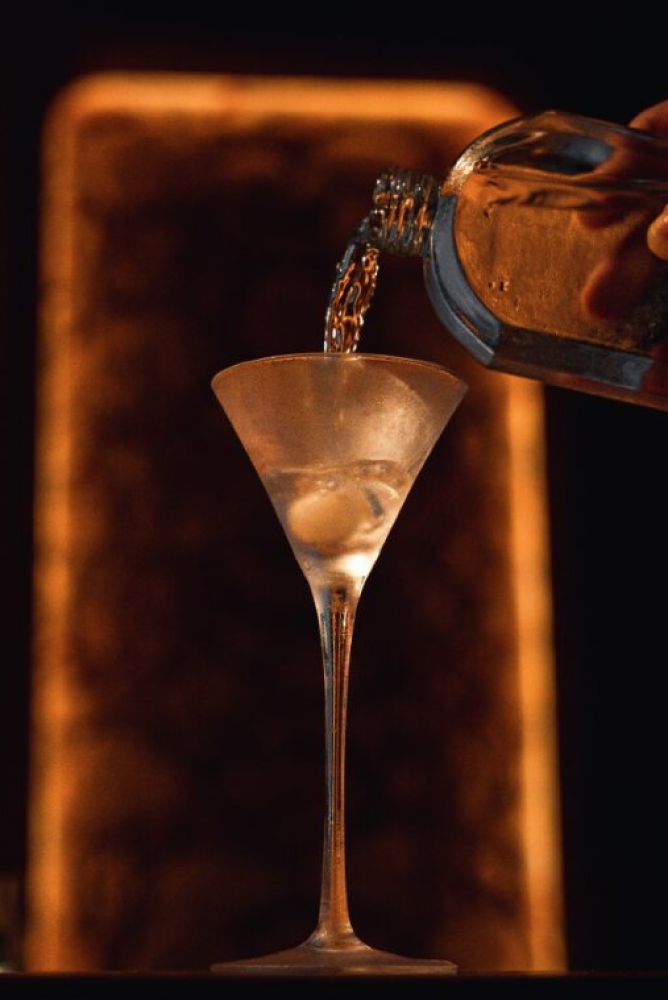Spice up your drinking life at The Savory Project
Aug 15, 2023
At The Savory Project, sugar is out while beef, cumin, shiitake mushroom and white soy are in. Co-founders Jay Khan and Ajit Gurung explain all to Stephenie Gee

If you can eat it, you can drink it. This is the territory that bartending heavyweights Jay Khan and Ajit Gurung wade into with their new concept two years in the making, The Savory Project. While salty, spicy and piquant cocktails are nothing new – think extra-dirty Martinis accompanied by a side of blue-cheese-stuffed olives; Bloody Marys with lashings of Worcestershire sauce; and spicy Margaritas rimmed with Tajín (pronounced “ta heen”, a Mexican seasoning made with a blend of dried ground chile peppers, lime and salt) – now more than ever imbibers are ditching sugary-sweet libations for the more brine-packed variety.
The Savory Project was born out of the increasing demand for drinks that are “not too sweet” – what have been some of the other trends you’ve noticed that you’re addressing at this new bar?
JK: We wouldn’t necessarily call them “trends”, rather shifts in culture. In addition to the increased demand for drinks with a savoury profile, we’ve noticed a shift towards drinking less or abstaining from alcohol altogether. This was an important consideration for us when conceptualising The Savory Project. Our menu offers nearly equal attention to both alcoholic and nonalcoholic beverages, creating a space where everyone can enjoy connections and flavours.

Why did you decide to open your own bar now? How long was this in the works for?
AG: Like many bartenders, I always had the dream of opening my own bar. Jay and I had wanted to work together for years, but the timing was never right. When I joined him at [Mexican-inspired craft cocktail bar and Best Bar in Asia 2022] COA several years ago, it was with the intention of seeing how we worked together so we could eventually open a bar together. About two years ago, we began working on the concept for The Savory Project and since then we’ve spent a lot of time developing our cocktail programme and perfecting our drinks to a level of which we are proud.
How would you describe your bartending philosophy?
AG: We like balancing surprise with familiarity in our spaces and with our drinks.
JK: Overall, we believe bars are a place for connection – between guests themselves, and between bartender and guests.
Also see: All-star guest shifts ahead of Asia’s 50 Best Bars 2023
Have there been any specific challenges in terms of making savoury cocktails? The techniques, the creative process, incorporating ingredients like meat, fungi etc – does it differ from the “usual” sweeter, fruitier drinks?
JK: One of the biggest challenges isn’t in terms of actually creating the drinks or using specific ingredients, but the perception of what “savoury” means and how to define it in ways that people can understand and appreciate. While sugar is dialled back with a savoury flavour profile, it isn’t totally absent or it would be an imbalanced drink that isn’t that pleasant.
Could you tell me more about your nonalcoholic drinks?
AG: Our nonalcoholic drinks, listed under the Temperance heading on our menu, are crafted with the same savoury and complex flavour profile as our cocktails. We have put equal attention into developing them as standalone drinks, rather than just replicating our alcoholic drinks with one ingredient missing. Our goal is to provide all of our guests, whether they’re drinking or not, with a special and welcoming experience that includes complex and interesting drinks.
You mention a growing demand amongst guests for savoury drinks, but them not having the words to describe what it is they like.
AG: A lot of times we would hear “not to sweet” or “less sugar please” or just notice how people navigated our menu and ordered at COA – because actually a lot of agave-based drinks have savoury notes to them – so
it was something we wanted to expand on without being limited to one spirit category, or any spirit category at all.

Could you walk me through the interior décor?
JK: We chose earth-toned colours for our design to reflect the savoury ingredients that we use in our drinks. We also incorporated various textures because we believe that texture is an essential aspect of both drinks and ingredients. One of the most intentional design features of our space is the hexagonal shape of the bar, which is intended to shorten the distance between the bartender and the guest. We want our guests to get
up close, see what we are doing, and feel like they are
in the home bar of a friend. The unique design of our space is meant to foster connections and create a welcoming atmosphere.

What were some of the pressures of opening a new bar, having already such a successful one in COA (which Khan founded in 2017 and besides being ranked Best Bar in Asia for the past two years is also No 17 on the current World’s Best Bars list)?
JK: We are humbled and so grateful for any award we’ve won, but we don’t set awards as goals. We just talk to and listen to our guests, figure out what they want, think about what we like, and create drinks and spaces that welcome and connect people.
What is it that you want guests to take away from spending time at The Savory Project?
AG: We want guests to enjoy themselves and each other; we want them to feel taken care of and to come away with a better understanding of what savoury means in terms of cocktails and that drinks can be more than one thing. Savoury cocktails can be light and refreshing, and some can also be on the bolder side – the profile offers a wide spectrum.
What do you ultimately hope to achieve with The Savory Project?
AG: We see The Savory Project, as the name implies, as an ongoing project that will further develop as time goes by. It’s a space to develop drinks, develop our team and develop connections with our guests.
Also see: Cocktail team behind Asia’s 50 Best Bars joins The Legian Seminyak, Bali



























